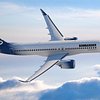The regional jet has had a significant impact on the airline industry, providing an option to efficiently ferry people to and from smaller airports where large airplanes are simply not a necessity. Here's a closer look at the impact of the regional jet, the challenges these planes face and what the future looks like for regional aircraft.
The Historic Connection of the Regional Jet
Regional aircraft are small jets with 100 or fewer seats, including the extremely small 50-seater models. The regional jet has been a player in the commercial airline industry for as long as passenger airlines have been in existence, as airlines have always needed a way to get a smaller number of passengers to a nearby destination.
Historically, regional jets were used for short flights to small airports that did not have the capacity for large planes. Travelers would fly on a larger plane into a major hub, then board a regional jet to get to their final destination. However, a recent trend has seen these small aircraft being pushed to the limit of their range, taking people farther and farther.
Benefits of Regional Jets for Airlines
Today's airlines, in an effort to conserve fuel, are looking to fly "right sized" aircraft, or aircraft that hold the number of passengers the airline can sell tickets to effectively. This has lead to an increased demand for larger regional jets, those that can hold close to 100 passengers, as an efficient alterative to running a heavier, and bigger, nearly empty passenger plane. The smaller size of the regional jet also means it can operate at those airports where large aircraft simply do not fit. This allows airlines to add direct service to small markets they would not be able to reach with larger planes.
Problems with the Regional Jet
Yet the regional jet has some problems that have to be overcome if it is going to remain a staple of the airline industry. First, passengers have a negative opinion of these planes. Their small size and lack of in-flight entertainment systems mean the flights are less comfortable. While this isn't a problem for short flights of less than an hour, airlines looking to pus the limits of these planes will find pushback from passengers.
Second, the extremely small airplanes are actually quite inefficient to run. This can drive up fuel costs, which airlines do not want to do. In addition, the older regional jets have low takeoff weight limits, and with an increasingly heavy population this makes it difficult to fill the seats safely.
The Solution: The New Era of Regional Jets
So what is the solution to these problems that would allow airlines to enjoy the benefits of regional jets without these risks? The answer is the new generation of regional jets which offer a better passenger experience, a larger number of seats and increased overall efficiency.
The Bombardier C series is an example of this. These jets hold 100 to 150 passengers, but operates with significantly less fuel usage than previous models. They also boast a cabin design that was built with passengers in mind, with wider seats and large windows.

The Embraer 175 and 190 jets are another example. This jet uses a high aspect ratio wing design, improved engines and improved architecture to reduce operating expenses by double digit percentages over previous models. It also has roomier cabin to increase passenger comfort. These jets hold between 70 and 108 passengers, providing increased capacity with decreased costs.


As airlines seek to become more competitive, they need an increased number of regional jets to reach smaller markets. United is currently leading this charge, adding a number of regional jets to its fleet in the coming years. Only time will tell if other airlines will follow suit, but chances are that if these aircraft continue to improve, the demand will likely increase.










